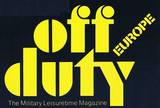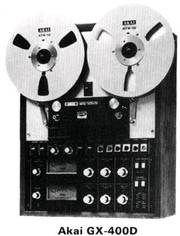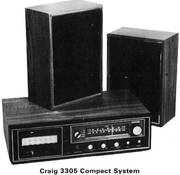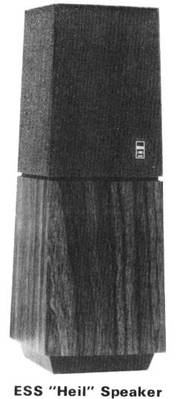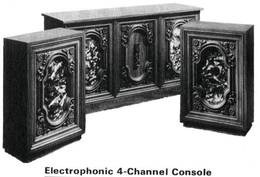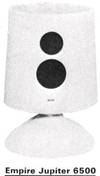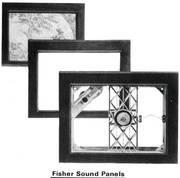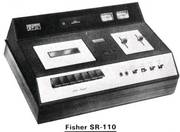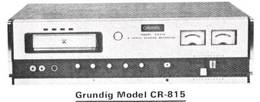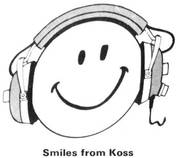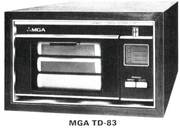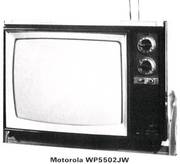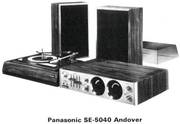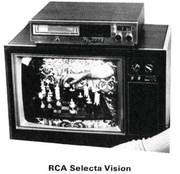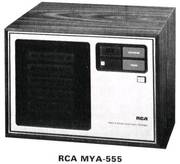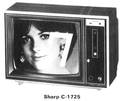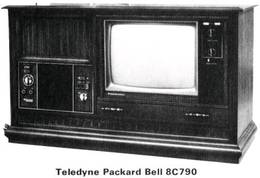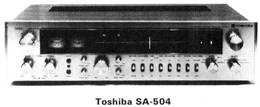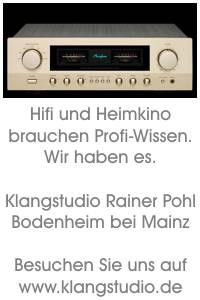"off duty" 1970 - 1997 - eine Freizeit-Zeitung für's US-Militär
Die in diesem amerikanischen (Freizeit-) Shopping-Magazin angepriesenen Hifi- und Video-Produkte waren auschließlich amerikanischen und kanadischen Militärangehörigen zugänglich - also zu kaufen - und vor allem zu ganz ungewöhnlich (verblüffend) niedrigen US $ Military-Preisen. Zu der einführenden "off duty" Seite geht es hier lang. - Um 1970 begann der weltweite Hifi-Boom bis zum 1. Crash 1978 und dann wieder zum 2.Crash um 1990. Über die 20 Jahre nach 2001 lesen Sie mehr in den Kolumnen auf diesen japanischen Seiten.
Die erste 1973er CES Ausstellung in Chicago im Januar
Bereits in dem 1972er off-duty Jahrgang sind mehrere einzelne Seiten mit den CES-News aus 1972 enthalten. Ursprünglich gab es - bis Jahreswechsel 1972/73 nur eine CES-Show oder Messe. Dann kam ganz offensichtlich die Gier der Messegesellschaft, angeblich aber nur aus Platznot. Hier im "off-duty"- Jahrgang 1973 wird jetzt der Umfang der gesammelten News-Details etwas reduziert. Nicht mehr alle technischen Daten werden übernommen. Nur die wesentlichen Specs stehen hinter der jeweiligen Type. Diese CES-Show ist die neue Winter-Show im wirklich bitterkalten Chicago mit den eiskalten Schneestürmen aus Norden über den Michigan See.
.
One's Not Enough - The Jan. 73 show (CES Bericht Teil 1)
(Die Einleitung)
Now it takes two CES shows to cover all the new audio developments - By WALTER B. RIOS - from Off Duty / Europe / April 1973
THE QUESTION visitors asked, on arriving at Chicago's Conrad Hilton Hotel for the first Winter Consumer Electronics Show was, "Why?"
Since it's traditional for manufacturers to unveil new electronics goodies at the big CES in June, few expected to find surprises at an off-season show and wondered why a second show was needed at all.
But a few hours touring the exhibition soon proved to this observer that a midwinter CES was a good idea and there's plenty new to report.
Any doubts there may have been about the future of 4-channel, for example, were dispelled at the Chicago show by the strong support it's getting from the American "majors" - firms like G.E., Motorola and Zenith who may not attract the high-fidelity enthusiast but who have a lot of sock in the Stateside marketplace.
4-Kanal Einzelshows in shopingcenters sind ineffizient
If they promote 4-channel in department stores and shopping centers coast to coast, you can bet the general public will take notice.
By convincing the dealers who came to Chicago in January, the industry made giant strides in the direction of selling the 4-channel concept once and for all.
A reason for doing it in January was that it coincided with Chicago's National Housewares Show, which attracts a group of dealers and chain-store buyers quite different from those who come to the June 73 CES.
This helped get the audio and 4-channel message out to an important new market improving channels of distribution for the still-growing consumer electronics industry.
It also prompted manufacturers to bring a bigger variety of electronics items to Chicago - home and office calculators, for example, and new kitchen equipment such as microwave ovens - which vied for attention with TV, tape and audio components for the first time at a CES.
Einige große Namen waren nicht präsent
Some of the big names in the components field were absent - their new products are timed for introduction in June - while others were content to show dealers the finished production-line versions of items unveiled as prototypes last June.
Still, even a mini-CES such as This one brings a mountain of new-product press releases and dealer hoopla from which some clear trends emerge:
.
- - The swing to 4-channel is giving cartridge tape a big boost, especially in home units. The typical 4-channel "compact" has a built-in cartridge tape deck that plays discrete Q-8 tapes as well as conventional 8-track stereo tapes through four loudspeakers.
- - Car stereo equipment is improving. You'll pay more for the player built into your next car, but it'll work better and last longer than earlier models. Top-of-the-line cartridge models handle 4-channel tapes or, if you opt for a cassette-type car stereo, you can get it with Dolby noise reduction circuitry included.
- - The CD-4 Quadradisc, the discrete 4-channel record that's RCA's answer to matrix systems espoused by CBS and others, is slowly getting off the pad and picking up outside support. Looks like it will definitely coexist with matrixed records for some time to come.
- - The stereo console isn't dead. It, too, has gone 4-channel. Some models use reflected sound off the wall to project rear-channel information, while others provide two additional speakers for placement elsewhere in the room.
- - Color TV is improving, with new circuits to instantly correct color intensity which varies from station to station, program to program and especially during program and commercial breaks. The trend continues to solid-state, modular-type circuitry that simplifies servicing. Bigger, brighter screens are also being emphasized.
- - Cartridge TV is making more noise than ever at the trade-show level, but manufacturers' promises that home videotape machines will be in widespread distribution very soon are a tune we've heard many times before. Maybe, this time. . .
- - Judging from a couple of sneak previews, the new season will bring numerous jumbo-type 4-channel receivers - bigger, more elaborate and higher-priced -with new ICs built in that handle all types of matrix and discrete quadraphonic systems.
- - There's continuing innovation in loudspeaker design, much of it spurred by the trend to 4-channel sound. Manufacturers assume that milady would like to hide at least a couple of those speakers that threaten to clutter her living room, and offer a variety of solutions.
.
Here's our stand-by-stand report:
.
Akai (Taperecorders)
Following the trend toward larger, more elaborate machines in the open-reel tape category, Akai unveiled a jumbo 10/2" reel model at CES with a Stateside recommended list price of $899.95. Called the GX-400D, it's an all-solenoid operated 3-motor deck with dual-capstan drive system that's bidirectional in both recording and playback.
The GX-400D is also the first Akai open-reel machine to feature the automatic distortion reduction system (ADRS) introduced last summer in Akai's cassette models. With it, says Akai, distortion at high frequencies is significantly reduced.
Another new Akai model, the GX-260D, offers bidirectional recording and playback at lower cost ($474.95 Stateside list), a center capstan drive system and separate outer-rotor motors for the take-up reels. It's a 7-in.-reel, 2-speed deck with features including Akai's glass-and-crystal ferrite heads and 2-position tape equalization switch.
Predictably, Akai is broadening its range of cassette models, now offering them with and without options such as Dolby noise reduction circuitry, auto-reverse, playback amplifier, GX head and ADRS.
The new GXC-41 is a recorder model, with built-in amplifier rated at 11 watts IHF, GX record/ playback head and ADRS, priced Stateside at $274.95. Shed the ADRS but add Dolby and it's the GXC-38 at $289.95. Or replace the GX head with Akai's standard one-micron head and you have the CS-35 at $189.95.
In deck form, latest models are the GXC-36D with glass-and-crystal ferrite head ($189.95) and the GXC-38D (229.95) which is the same deck with Dolby added. Top of the Akai cassette line is still the GXC-65D, with its Invert-O-Matic mechanism that flips the cassette to allow continuous playback and reverse recording.
Akai (Electronics)
The surprise at Akai's Winter CES exhibit was an array of receiver, tuner and amplifier models that marks this tape-equipment manufacturer's boldest entry into electronics gear.
In addition to seeing four receivers and a matched tuner-and-amplifier combination, dealers got a preview of Akai's receiver with everything, the AS-980, It's a 4-channel monster that's sure to shake up military fans in the Western Pacific who are hungry for the latest in options and extras.
This one has all known matrix and demodulator circucits built in, including both SQ and Regular Matrix plus a CD-4 demodulator for discrete 4-channel records. The receiver's 13 watts (RMS) per channel convert to higher-powered 2-channel stereo at the touch of a front-panel button - and the button also darkens two of the set's four VU meters so you know where you're at.
There's a plug-in remote control unit for volume and balance, provision for switching three sets of speakers and many, many more front-panel doodads.
Of Akai's four new stereo receivers, one (model AA-910D)
features built-in Dolby circuitry to handle the Dolbyized FM broadcasts that are rapidly becoming commonplace in the States. Power rating is 13 watts RMS per channel and the price Stateside is $279.95.
Without Dolby, it's model AA-910 at $249.95. Higher powered models in the new series are the AA-930 at 42 watts RMS per channel ($349.95) and AA-940 at 63 watts RMS per channel ($449.95). The power ratings, incidentally, are all stated by Akai at harmonic and IM distortion levels of 0.1 per cent or less.
BSR (McDonald)
The turntable maker's U.S. company in Blauvelt, N.Y. now markets a series of "black box" adapters and equalizers by Metrotec that includes three items useful for 4-channel conversions. Simplest is a passive adapter, an innovation introduced by Dynaco's David Hafler a couple of years ago.
It's a matrix decoder that you connect to the output of an amplifier to connect four speakers to a conventional stereo amplifier. Since it has no sophisticated electronics, the system can siphon off to the rear channels only those signals that are clearly out of phase with the front, channels.
With all its limitations, it's still a good start in the direction of surround sound, since all you need is the adapter and a second pair of speakers. The new BSR model, called, appropriately, the "Quasi-Quad Adapter," is fitted with a mode selector for different types of music and controls for matrix blend and rear-speaker level.
BSR-Metrotec also has a more elaborate decoder that connects to a stereo preamp output and requires a second stereo power amplifier for the rear speakers. Called the SDW-Q, it handles both SQ and EV matrix, the latter compatible with Japan's SM (Standard Matrix) system.
It's also available with a built-in rear-channel power amplifier (10 watts RMS per channel), as model SD4A-Q. Also at the Winter CES was a prototype of a BSR-Metrotec adapter for discrete CD-4 Quadradiscs. Details are available from BSR (U.S.) Ltd., Blauvelt,NY 10913.
CBS
If you've wondered what happened to "Soundcraft" brand tape, one of the old names in magnetic recording, take note that it's now owned by CBS and marketed under the Columbia Magnetics label.
Two lines of blank tape were introduced at the Chicago show. The top grade, a low-noise high-output formula of gamma-ferric oxide, is known as Columbia. A lower-priced series retains the Soundcraft name. Both will turn up in cassette, cartridge and open-reel formats.
.
Cerwin-Vega
We wondered when the folks who make the big noise at rock concerts would move their heavy-duty sound equipment into somebody's living room.
And we found out. They put on by far the loudest demonstration heard at the Conrad Hilton Hotel. The mind-blowing equipment included Cerwin-Vega's A-3000 power amplifier, rated at 400 watts per channel at 8 ohms. Stateside price: $895.00.
The speakers to match are a pair of Cerwin-Vega 432 (R) four-way systems, with 18-in. woofer, 8-in. midrange and two high-frequency horns. The bass and midrange drivers are rear-loaded and can handle 300 watts RMS input. Its price is a modest $799.50 each. Of course, Cerwin-Vega now has a line of smaller speakers as well - the "(R)" in the designation, by the way, stands for "Residential" (look out, neighbors!) - and the firm will send information if you write to Cerwin-Vega, 6945 Tujunga, North Hollywood, CA91605.
.
Craig (eigentlich eine japanische Autoradio Firma)
Though the name Craig turns up overseas only rarely, since the equipment is produced in Japan by firms such as Pioneer, the line is typical of the type of gear military customers will find in Conus exchanges after they return home.
Since components are no longer authorized for sale in Stateside exchanges, it is the budget-priced "package" that grabs most of the attention. Craig's new 3305 system is typical: An AM-FM stereo receiver with 8-track cartridge recorder/player built in, and a pair of speakers. Its $229.95 suggested retail price puts the 3305 in the PX ball park Stateside because it gets under the price ceiling imposed by the House Armed Services Committee (HASC). Details are available from Craig Corp., 921 West Artesia Blvd., Compton, CA 90220.
ESS
Though its name means "Electrostatic Sound Systems", the ESS company virtually wrote itself write out of the electrostatic speaker business at the Winter CES by introducing an all-new speaker design that claims to put electrostatics in the shade.
Instead of "pushing" at the air to generate motion of sound waves, as do all loudspeakers that employ a diaphragm or cone, the new EES uses a squeezing action, like a pneumatic "lever," to project air into motion with five times as much force as the piston action of conventional speakers.
It's done with a light plastic material, 1/2-mil thick, that's formed into a series of interfacing cavities. Known as the "Heil Air Motion Transformer" (after its inventor, Physicist Oskar Heil), the basic unit has no voice coil, no elastic suspension device, no significant mass and no "forward-backward" motion.
The sound, as demonstrated in Chicago, has a transparency similar to electrostatic speakers. EES claims the system has even lower distortion, and much greater transient capability since it has near instantaneous acceleration. Other claims for the design include omnidirectional dispersion and a seven-ohm impedance that does not vary with frequency.
The Heil Air Motion Transformer is built into two speaker models introduced by ESS at the Winter CES, one 42 in. high, the other 28 in. high, both finished in walnut with dark grill cloth. In each, the Heil unit covers the 400 to 25,000 Hz range, while conventional dynamic speakers are employed for the range below 400 Hz.
Also shown by EES was a speaker system designed exclusively for 4-channel sound. It combines four satellite speakers, each measuring 10x10x7", with a single bass cube driven by its own amplifier, rated at 100 watts RMS.
Power from the regular 4-channel amplifier goes only to the midrange/tweeter units, which provide the directionality in quadraphonic music. The nondirectional bass, which requires much more power, thus has its own amplifier and does not drain the wattage of the regular 4-channel system. Included
is a power matrix with frequency dividing network and bass equalizer. The six-piece set, known as the Satellite 4, carries a Stateside price of $525 in walnut, $585 in rosewood.
Rounding out the EES line is a stereo preamplifier priced at $395 and a 500-watt RMS stereo power amplifier at $595. ESS also has a range of smaller loudspeaker systems. Details are available from ESS, Inc., 9613 Oates Drive, Sacramento, CA 95827.
Electrophonic
Consoles, too, are going 4-channel, a sure sign that surround sound is here to stay. Now the Mediterranean-styled console also drives an additional pair of speakers for the rear channels. The Electrophonics, by "Morse Electro Products Corp." of Brooklyn, NY, offer a choice of matching end-table enclosures, or modernistic spheres mounted on pedestals. The consoles are outfitted with 4-channel cartridge tape players for discrete quad, and SQ matrix decoders for disk playback with the set's built-in Garrard or BSR changer. AM-FM stereo radio is included, and power is stated as 260 watts according to the console-makers' peak-power rating method.
Empire
The distinctive cylindrical speaker design by Empire is now available in a weatherproofed version, the Jupiter 6500, that features a virtually indestructible enclosure made of a new acoustic material called Uniroyal Rubicast.
As in other Empire designs, the system's 12" woofer faces downward, while midrange and treble units in the 3-way system are forward facing.
The new Jupiter 6500 has a 75-watt power handling capacity and 8-ohm impedance rating. It stands 25/2 inches high, weighs 40 pounds and is finished in white gloss. Stateside price is $ 139.95.
Fisher
A speaker system less than three inches thick that lends itself to a wide variety of decorative applications was the new-product highlight of Fisher Radio's exhibit at the Winter CES. The new Fisher "Sound Panel" can be used on the floor, as a screen, hung on a wall like a picture or even suspended from the ceiling. It is available in numerous grill cloth patterns and carries a Stateside price of $138.
Unlike other "thin" speaker designs, which use conventional speaker cones in box-like enclosures of narrow dimension, the Sound Panel converts electrical energy into vibrations that are "hammered" through and across an acoustical polymer diaphragm.
Fisher says the coupling of the voice coils to the diaphragm is not unlike that of musical instruments with strings that are stretched across a sounding board. The new speaker, model PL-6, is a two-way system with separate magnets and voice coils for treble and bass frequencies. Fisher claims the speaker has 360-degree dispersion and you get as much sound from the rear and sides of the panel as you do from the front.
Also new from Fisher is the SR-110 cassette tape deck, with Dolby noise reduction circuitry and provision for chromium dioxide as well as conventional oxide tape formulas.
GE
Giant GE is also making forays into component-type audio gear, including 4-channel cartridge tape systems. And, on the TV scene, the GE line follows the industry-wide trend toward 100 per cent solid-state chassis with modular construction that greatly simplifies servicing.
GE now has color TV in 10-in., 1 6-in., 1 9-in. and 25-in. (diagonal) screen sizes. In black-and-white, the latest GE model is a 9-in. set in mod styling and tangerine cabinet - and GE claims that it's the only 9-incher on the market that's completely
U.S. made "Grundig" (..... das ist für uns hier völlig neu !!!)
On a promotion theme called "Best of Both Worlds," Germany's Grundig has launched a campaign to supplement its Continental production with special components from Japan, especially for the U.S. market.
The result is an interesting hybrid: Japanese equipment with Continental styling. The Grundig CR-815, for example, has a German look, pretty unusual for an 8-track cartridge record/playback tape deck, and stylistically a match for Grundig's well known multibank receivers and components. The cartridge deck is also built into a new receiver, model S-850, an AM-FM stereo tuner-amplifier rated at 10 watts per channel. An extra feature of this recorder / receiver combination is a "sleep switch" that ejects the tape and turns off the entire system when the last track has been played.
.
(continued next month)
.
Majors on the Move - The Jan. 73 show - (CES Bericht Teil 2)
Die Einleitung - Teil 2
From Off Duty / Europe / May 73 - Part two of our Winter CES coverage - By WALTER B. RIOS
THE UNEASY MARRIAGE of high fidelity and mass merchandising was never more apparent than at the first Winter CES, a gathering of manufacturers in Chicago's Conrad Hilton Hotel for the purpose of selling Stateside dealers the latest in consumer electronics products.
Compared to the mammoth exhibit last June at McCormick Place on Chicago's lakefront, the winter event was a small show. But there was an air of bigness about it that, to a visitor accustomed to small high fidelity shows, was almost frightening.
Because all the biggies were there - the giant radio/TV manufacturers whose enormous product lines dominate the trade except for the small group of specialized hi-fi component dealers.
Now the biggies - the "majors", as they are known - appear to have "discovered" the hi-fi market and want to make it their own. And they want to do it their own way.
The biggies - the "majors" - wenn sie total übertreiben
This could make it tough for smaller manufacturers who want to maintain the high standards that have built the high-fidelity industry.
Because, if a giant manufacturer wants to promote a $99.50 package special as a "300-watt component stereo," there is very little that the purist can do about it, unless the Federal Trade Commission steps in with a legally binding set of advertising ground rules.
Of course, the audiophile isn't fooled by the blown-up performance specs used by package stereo and console manufacturers, but his voice of protest gets fainter and fainter as the mass market becomes more and more confused.
What a few of the larger hi-fi manufacturers are doing, sadly, is joining the majors in the game, since they can't beat them anyway.
Thus you find the same piece of equipment rated conservatively in the high fidelity literature, blown up with exaggerated specs in literature that goes to non-hi-fi dealers.
The effect is to make the language of real high fidelity like that of an exclusive club, instead of getting the word out to the general public.
Aufpassen, es wird geschummelt und gelogen
With most of the hi-fi clan missing at the Winter CES - they were holding back until June, when OFF DUTY will again be in Chicago to report the latest 4-channel happenings - the intimacy and camaraderie that you find at true high fidelity shows was hardly in evidence.
When a giant radio/TV manufacturer talks to his dealers about his new line of stereo equipment, he'll use the terms "acoustic suspension," "power," "matrix," "discrete" and "components" all too freely, because they sound to him like selling terminology.
He'll avoid terms like "distortion" or "flutter and wow," since they lack that selling zing that copywriters look for. So, the whole exercise is rendered meaningless, leaving the audiophile shaking his head and keeping the general public in the dark as to the real meaning of high fidelity.
Es ist aber nicht alles schwarz ....
But the picture isn't all black. With more manufacturers actively promoting higher grade equipment, more of the general public is being exposed to the audio message - even if it's a bit distorted in the presentation.
The high fidelity manufacturers, even while they're being pushed around by the majors, are fighting back through their industry associations.
The FTC, working with industry groups on both sides of the fence, is drawing up standards that will be legally binding. There's hope that, one day, even John Q. Public will be able to tell the difference between "300 watts peak music power" and "30 watts per channel RMS with 0.5 per cent distortion, both channels driven." After all, they made the TV people say "19 inches measured diagonally" didn't they?
.
Here's the concluding 2. part of our stand-by-stand report on the Winter CES:
.
JVC
Now that its 4-channel system has the backing of giant RCA, the JVC exhibit of quadraphonic equipment attracts more attention than ever at CES. Refinements in the CD-4 system, since its unveiling a couple of years ago, include smaller and more sensitive disc demodulators for playback of discrete 4-channel records.
For the present, the JVC demodulator is still an add-on accessory that you connect between the turntable and the phono inputs of a 4-channel amplifier or receiver.
An integrated circuit or "chip" version of the demodulator, which can be built into 4-channel components at modest extra cost, is still several months away. Meanwhile, JVC has gone ahead with Stateside introduction of two 4-channel amplifiers.
The 4VN-770 and 4VN-990 both include a matrix decoder which JVC calls "SFCS" - presumably to sidestep the battling matrix systems, SQ and RM. The 4VN-990 also features the JVC 5-way tone controls called SEA. And both models employ a power-bridging output circuit that more than doubles the power when front and rear channels are combined for conventional stereo operation.
A matching JVC tuner, model VT-900, features digital readout of the MHz frequency. This type of tuning is also built into JVC's latest stereo receiver, model VR-5660, which also has a digital clock that reads out the time at the press of a button. The receiver has SEA-type tone controls, provision for three pairs of speakers, and 300-watt power rating.
.
Jensen
Aiming at the fast-expanding outdoors market, Jensen Sound Labs of Chicago has a new series of "Mobile High Fidelity" speakers for the car, boat, trailer or camper. The SK52RRFX stereo kit includes two 51/4" dual-cone speakers with 20-oz. ceramic magnet, padded snap-on grills and mounting hardware.
In addition, there are two models with 6x9-in. oval-shaped speakers. Model SK96RRFX is a stereo kit featuring 20-oz. magnet on each of the speakers, while SK96RFX has 10-oz. magnets and a lower price. For details, write: Jensen Sound Labs, 4310 Trans World Road, Schiller Park, IL 60176.
Koss
The headphone people, too, are going outdoors. Koss now has a 28-foot portable classroom and mini hi-fi show, called the Kossmobile, visiting audio dealers, shopping malls and college campuses around the States. To promote its line of stereophones, Koss has also splashed the ubiquitous "Smile" emblem - with headphones on, of course - on 18x48-ft. billboards in Chicago and New York area expressways.
.
MGA
Still new on the Stateside scene, MGA is the brand name of "Mitsubishi International Corp. of Japan", big in TV and home appliances. MGA's latest color set is a 15-in. (diagonal) portable, model CS-150, with 110-deg. deflection picture tube that gives it a "thinside" look (the cabinet is 14>2-in. deep). It has a 100 per cent solid-state chassis.
Also new is the MGA cartridge changer, a deck that holds up to three 8-track tape cartridges and plays them in sequence. Called the TD-83 "3-PAC," it has a Stateside price of $99.95. In the 4-channel field, MGA offers the SD-40 decoder / amplifier for converting stereo systems to quadrasonic sound. It provides the needed amplifier for the rear channels, a master level control, and both SQ and RM decoders for matrixed records.
Mitsubishi's adapter also has a logic circuit built in, which it calls a "Separation Enhancer," and a synthesizer to convert conventional stereo material to derived (phoney) 4-channel sound. Its U.S. retail price is $189.95.
.
3M
With new formulas for magnetic tape now so numerous that customers are getting confused, giant 3M has revamped its line with restyled packaging and designations to tell you where you are.
Top of the line in open-reel tape is unchanged - it's still the Scotch High Output/Low Noise formula known as No. 206 (60-minute length) and No. 207 (90-minute).
Note that 3M makes no mention of the tape footage on each reel, figuring that what really counts is recording time. All 3M open-reel tapes are now measured in recording minutes at 7 1/2 inches-per-second. (Cartridges are, of course, rated at their standard 3 3/4 ips tape speed, while cassettes are all 1 7/8 ips.) No. 206 and 207 are both packed in 7" plastic reels and feature 3M's "Posi-Trak" backing which controls the tape winding on the take-up reel. The 60-minute tape is 1/2-mil polyester, while the 90-minute No. 207 is 1 -mil thickness (what we used to call "long-play" tape).
Some well-known Scotch tapes will disappear from the 3M line, including No. 111, familiar to recording fans for nearly 25 years. No more "standard" oxide - strictly "low-noise" now - and tape with acetate backing is gone, too, as 3M converts to 100 percent polyester.
The medium-price 3M range in open-reel tape, known as "Low Noise Dynarange," is now designated as No. 211 (60-min.), 212 (90-min.), 213 (120-min.) and 214 (180-min.). The last two are J4-mil thickness and tensilized. Some are also packaged in 3-in. and 5-in. reels. Low-price 3M range is the "Highlander Low Noise" No. 228 (60-min.) and 229 (90-min.).
Cassettes, too, are now in three different price ranges. At the top is 3M's "High Energy Cobalt Energized" tape with Posi-Track backing, available in 45-, 60- and 90-min. lengths. Medium-price line is the "Low Noise High Density" tape, also with Posi-Trak, in 45-, 60-, 90- and 120-min. lengths.
3M's budget cassettes, available in the same lengths, are the "Highlander Low Noise" series.
There are now two grades of 8-track cartridge tape from 3M. A new top-of-the-line cartridge, "High Output Low Noise," is available in 45-min. and 90-min. lengths, as is the all-purpose cartridge at lower price, known as "Low Noise Dynarange."
.
Motorola
The off-season CES also produced some new trade jargon, the "Winter Drop-In." That's what dealers called the new Motorola WP5502JW, a 19-in. diagonal Quasar portable color TV set "dropped into" the Motorola line in the middle of the model year.
Reason for the new entry is that 18/19" screen sets make up the fastest-selling and most competive sales category in the Stateside color TV market. The new Motorola model features a one-button "Insta-Matic" tuning control which balances color hue, intensity, brightness and contrast. Construction is nearly all solid state, with all but four chassis tubes replaced by transistors and a high voltage rectifier. They are arranged into circuit modules that plug into the Quasar "works in a drawer" chassis. Stadeside price of the WP5502JW is $379.95.
Also new is an AM-FM stereo receiver, model FH203JW, with two 5" speakers in matching enclosures, priced at $109.95. It's available, too, with stereo cartridge player built in along-side and a record changer topside (model FH21 3JW) at $199.95. Another arrangement is an ensemble with cart that includes the receiver, 8-track player, record changer with dust cover, stereo headphones, matching speakers - all components (including the roll-around cart) packed in a single carton and priced Stateside at $219.95 (model FS209JW). That price, by the way, ducks under the price ceiling in Conus exchanges (imposed by the House Armed Services Committee) so the set may turn up in PXs this fall.
Panasonic
The 4-channel fanfare at Panasonic's Winter CES exhibit was for a components line already introduced in the overseas military market - especially in the Pacific, where exchanges in Japan frequently put hot new models on sale even before the first shipments leave for the States.
Prestige components such as the costly SL-1100 turntable with direct-drive brush-less motor were there, too, but they were outnumbered by Panasonic's enormous bread-and-butter line of TVs, portables and budget-price "stereos," the goods that make Matsushita Electric Corp. one of the world's consumer electronics majors.
In that role, Panasonic is doing plenty to get 4-channel concepts down to the grass/roots market. Worthy of note is the Series 44, a group of compacts with built-in 4-channel capability.
In the SE-5040 Andover, for example, 3x5-in. speakers are built into either side of the receiver, with two additional speakers (6/2-in.) in separate enclosures provided to complete the quad setup.
The control unit includes discrete 4-channel amplifier and "Quadruplex" circuitry - a matrixing device that plays stereo or matrixed discs through all four speakers. A stereo record changer is provided. There are jacks for playback of discrete 4-channel tapes and another set of jacks for connecting an outboard demodulator for CD-4 discs.
The receiver's built-in speakers can also be bypassed should you wish to add two more external speaker systems. A multiplex jack on the tuner provides for addition of the adapter that will be required for discrete 4-channel FM broadcasting, if and when the FCC authorizes it. So the moderate-priced SE-5040 ($199.95 Stateside retail) is ready on all fronts for the 4-channel future.
Another in the Series 44 is model RE-7740, the Hastings, with four full-size speakers driven by a total of 40 watts peak music power. Its suggested Stateside price is $179.95. The SE-4340 Grandhaven, which has both a record changer and 4-channel cartridge tape player built into the control center, also comes with four separate speakers. This one has a remote control 4-channel balancer as an optional plug-in accessory. With peak music-power rating of 48 watts, and AM-FM stereo tuner, the SE-4340 ensemble is priced at $329.95.
.
RCA
Lest anyone get the wrong impression, RCA issued a "position paper" on 4-channel at the Winter CES - because the RCA exhibit at the Conrad Hilton Hotel did not feature any 4-channel equipment!
Instead, there was a line of low-cost stereo gear with an enhancement circuit to provide simulated surround sound through four speakers - the familiar "Hafler matrix" that requires only a special hookup of the speakers and no rear-channel amplifier.
RCA calls it "Dimensia IV." It will play matrixed records through four speakers, but with only modest quad effect since it has none of the "logic" and other fancy electronic circuitry of the better matrix-type systems.
RCA's five new Dimensia models, and most other stereo sets currently available, can of course be converted to both matrix and discrete 4-channel by adding a decoder/amplifier.
So the RCA position was hardly a cop-out. It's just that RCA's preferred method of delivering 4-channel, by means of the CD-4 discrete disc, is still in the higher-price category. Even giants like RCA gotta make some bread in the meantime.
The big news at RCA was the unveiling of its long-awaited
"SelectaVision" home videotape recorder/player system, a VTR that connects to any standard television receiver.
The color recorder packs separate VHF/UHF tuners permitting one program to be recorded while watching a second. With its built-in clock/timer, SelectaVision allows you to record programs off the air when you're not at home. The system uses an in-cartridge scanning system that requires no tape threading.
As shown at Chicago, SelectaVision is a stylish 24x16%x5 3/4" deck that fits nicely atop a TV console, weighs only about 35 pounds, and works impressively. In answer to the obvious questions, "When?" and "How much?", RCA answers "Late this year" and "About the same as a color TV console." We'll see.
Sanyo
An adapter for using a car stereo player at home is featured in the new line-up of automotive sound systems by Sanyo.
The $39 accessory, model FTV-200, connects the Sanyo FT 888 cartridge player to your AC house current and has an attractive cabinet to boot. So, now the thief who steals your under-the-dash car stereo doesn't even have to own a car to use it. Which is why, perhaps, there's a trend toward in-dash mounting of your car stereo, such as Sanyo's new FT 867 with AM/FM-stereo radio built in ($149 Stateside price).
On the TV scene, Sanyo has a new AC/DC portable powered by a built-in rechargeable battery pack, with 5-in. screen, priced at $179. A new 19-in. color set, model 91C19W, features wireless remote control and is priced at $379.
.
Sharp
Sharp has made its first plunge into 4-channel, introducing a moderate-price receiver (model SA-4520U), with four discrete channels of amplification totaling 36 watts peak power, both SQ and RM matrix decoders and provision for adding CD-4 and discrete 4-channel tape.
.
Teledyne Packard Bell
The Packard Bell people, big in consoles, have jumped into the home videotape field with a competing system known as Cartrivision, built into some fancy console TVs. The recorder-playback unit records any TV show as it is aired and can be preset up to eight hours in advance to record automatically whether you're home or not.
Cartrivision also plays color or black-and-white prerecorded programs. Add an optional camera and you can set up the VTR monitor as in-home closed-circuit TV system and record your own home movies as well. The first packard Bell console with VTR is model 10C990 which has a 25-in. picture and retails in the States for $1,595. The black-and-white camera is $249 extra.
The newest Cartrivision, unveiled at the CES, is model 8C790 with a 19-in. picture and 100 per cent solid-state chassis arranged vertically with plug-in connectors to save space. Packard Bell's latest audio products in the budget price class feature a simple matrix called "Stage Four" that handles matrixed 4-channel material with two amplifiers playing into four speakers. One is a Mediterranean-styled 5-ft. console, model RPC 41 7, with 8-track cartridge player, Garrard turntable and solid state AM/FM tuner-amplifier, priced at $299.95 (the extra two speakers for the 4-channel effect are optional).
The other is an 8-piece set, model C02204, in a roll-about stand, all for $179.95. Move up to the K10205 Ballad II ($329.95) or the R20203 Fantasia II ($399.95) and you get a discrete 4-channel amplifier in addition to matrix circuitry. Prices include a pair of 2-way systems and a bookshelf cabinet to house the components.
Toshiba
While Toshiba's clout on the Stateside scene is in the bread-and-butter line of TV sets, clock radios and other mass-market goodies, the Japanese giant continues to flex its muscles in the high fidelity field.
Dealers visiting the Winter CES were shown an imposing array of components with up-to-date features - the PT-470 cassette tape deck with Dolby, the C-401S Electret Condenser cartridge and two 4-channel receivers (models SA-504 and SA-304) with BTL (bridgeless, transformerless) output that switches easily from 4-channel to conventional stereo with double the power.
But these products, introduced several months ago in military outlets overseas, are already familiar to OFF DUTY readers.
Pressing our hosts for something really new, we were shown advance samples of Toshiba components not yet available in America - harbingers, perhaps, of what will be in some exchanges and audio clubs later this year. A new tuner, model SDT-600, features an all-electric tuning system with digital read-out and an automatic scanning mechanism that can be set for advancing in increments of 0.1,1 or 10 MHz. Memory buttons are provided for presetting four stations.
The tuner's signal strength indicator also looks unusual - instead of a meter, a set of six colored dots is used, and the more of them that light up, the stonger the station's signal.
Toshiba also has some futuristic-looking speaker systems designed for omnidirectional sound. Again, they were billed as "samples - just arrived" and no details were available, but the SS-61 hexagonal speaker and SS-64 wall-mounted system (with four 6-in. drivers at oblique angles) look like part of an interesting new series that departs from the traditional box shape.
.
By WALTER B. RIOS - from Off Duty / Europe / April 1973
.
.

